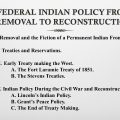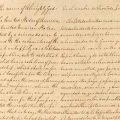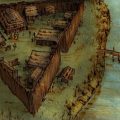
Two and a half centuries ago, in 1766, American Indian life had already undergone dramatic changes due to the European invasion. Horses, originally brought into New Mexico by Spanish settlers, had diffused into the Great Plains following the Pueblo Revolt of 1680. With the horse, Plains Indian cultures had changed into the nomadic, tipi-dwelling, buffalo hunters stereotyped in twentieth century movies. As the eastern colonies expanded and the fur trade grew, many tribes began migrating on to the Great Plains.
In general, American Indian nations had to deal with two European nations: Britain and Spain. Briefly described below are some of the Indian events of 1766.
English:
British explorer Jonathan Carver was sent out to explore the uncharted western territories and to search for the supposed Northwest Passage. He made it only to the Minnesota River, but his book became very popular. His maps show a long River of the West. In some of his maps, this river was named Origan which later became Oregon.
In Wisconsin, Carver found the Fox and Sauk living in four villages. The largest of these villages had about 80 large dwellings and about 300 warriors. The dwellings were organized along straight lines with wide streets. He reported that the Indians had extensive fields of corn, beans, melons, squash, and tobacco.
In Wisconsin, British trader Alexander Henry visits the Ojibwa at Chequamegon. He reported that there were 50 lodges in the village and that because of the interrupted trade the people were living in poor conditions.
In New York, the English residents of Ulster County wrote to Sir William Johnson, the superintendent of Indian affairs, to inform him of their concern for the killing of an Indian by a vagrant. They asked that the vagrant be brought to justice and punished in order to avert possible Indian retaliation.
In Pennsylvania, an Oneida man (no name is known) was murdered and robbed. His murderer, described as a vagabond, was arrested and locked in a crude log jail. His was then freed from jail by a mob of men who threaten destruction to anyone who interferes with them. He was, however, recaptured, tried, convicted, and hung.
In Pennsylvania, the self-promoting Indian fighter Major Robert Rogers produced a play entitled Ponteach, or the Savages of America. In the play, two European hunters complained about Indians and wished it were legal to hunt them. Historian Peter Silver, in his book Our Savage Neighbors: How Indian War Transformed Early America, reports:
“Though the play included much stunning stage violence, its harsh picture of the killing and robbery of two Indians was of most interest.”
In New Jersey, three European settlers raped and killed two Delaware (tribe) women. Governor William Franklin saw to it that the two who were found guilty and executed.
The Ottawa chief Pontiac signed a peace agreement with the British.
The governor of Newfoundland announced that it was not British policy to exterminate the Beothuk and outlawed the practice of indiscriminate killing of Indians.
Hudson’s Bay Company trader William Pink left the York Factory with Cree leader Mousinnikissack to travel to Saskatchewan. In the Prince Albert area he encountered a small band of Assiniboine and reported that they had many horses. He also noted that they had given up the use of canoes.
Spanish:
In Missouri, Osage warriors captured a number of horses near St. Louis. The Spanish pursued the raiders and captured one warrior. Spanish officials notified the Osage chiefs that the captive would be held until they paid for the damages.
In Texas, a war party of 400 Comanche, Taovaya, Tonkawa, and Hasinai attacked the Franciscan mission at San Lorenzo. The Lipan Apache, for whom the mission had been built, fled and not a single Indian remained at the mission.
In New Mexico, Spanish ranchers applied for grants to the Ojo del Espiritu Santo area. The pueblos of Zia, Jemez, and Santa Ana sent a petition to the Spanish Governor explaining that their people had long used these lands. Awarding the land grant to the Spanish ranchers would result in great injury to them as they had no other place to pasture their herds. The petition asked the Governor to deny the land grant and to award the land to the three pueblos. The Governor agreed and awarded a joint land grant to the three pueblos.
Migrations:
By this time, eight of the eleven Dakota bands had moved west from Minnesota to the Great Plains and were becoming Plains Indians.
In Iowa, the Iowa (tribe) moved from the Missouri River to the Des Moines River where traders from Spanish-controlled St. Louis agreed to open trade with them.
Smallpox
In Texas, smallpox struck the Karankawa.
Mastodon
In Kentucky, a second excavation of Big Bone Lick was conducted on behalf of Benjamin Franklin and Lord Shelborn of London, England. A substantial number of mastodon fossils were collected and subjected to detailed examination. Not understanding the concept of extinction, there were a number of people at this time who expected that explorers would actually find living mastodons in North America.
Fur Trade
In Ontario, Oneida trader Sarah Ainse began trading with the Mississauga on the north shore of Lake Eire.




Leave a Reply